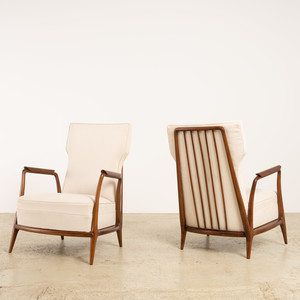
A rare pair of vintage lounge armchairs by Giuseppe Scapinelli distinguished by the elegant wooden detailing on their sculpted, barred high back. -Base made in solid caviúna wood -Cotton upholstery
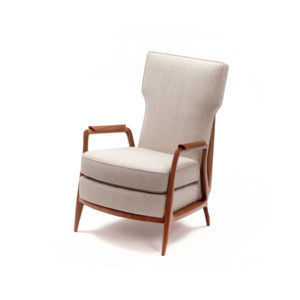
Designed by Giuseppe Scapinelli in the 1950s, the GS is one of his most striking armchairs; in its sinuous shapes, he created a piece that is both alluring and futuristic. The armchair is defined by the elegant wooden details on its sculpted, barred high back. - Available in honey canela wood; - Available in a variety of fabrics, leathers, COM/COL;…
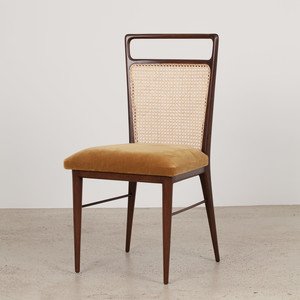
The GS1 dining chair, designed by architect Giuseppe Scapinelli in the 1950s, is distinguished by its gentle curves, caned back, and legs which narrow at their ends. - Upholstery offered in a variety of fabrics, COM/COL - Part of Etel Collection - Made to order
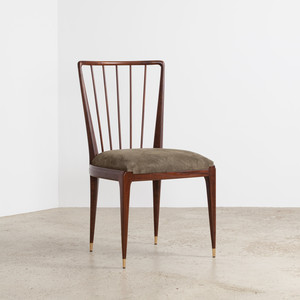
The GS2 dining chair, recognized for its posh formality, was designed by architect Giuseppe Scapinelli in the 1950s. Wooden pieces form its back, and its legs narrow towards their end, detailed in metal. - Base structure made of canela wood - Upholstery offered in a variety of fabrics, COM/COL - Reissued by Etel - Made to order
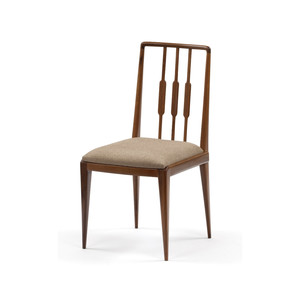
The elegant GS3 dining chair, designed by architect Giuseppe Scapinelli in the 1950s, possess a unique back: three wooden pieces with widened middles. - Upholstery offered in a variety of fabrics, COM/COL - Part of Etel Collection - Made to order
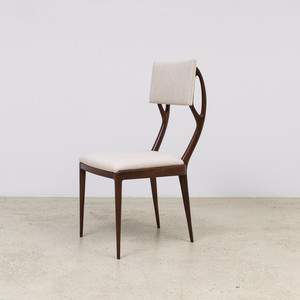
The GS4 dining chair simultaneously possesses a sleek and fantastical air. Its long curves and openings are two of its most distinguishable features. - Upholstery offered in a variety of fabrics, COM/COL - Part of the Etel collection - Made to order
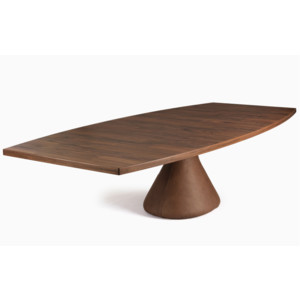
The Guanabara dining table features a biomorphic concrete base cladded in leather, and an ovoid patchwork wood veneer top. - Freijo, Imbuia or Pau-Ferro patchwork wood veneer top - Concrete base cladded in leather - Reissued by Etel - Made to Order
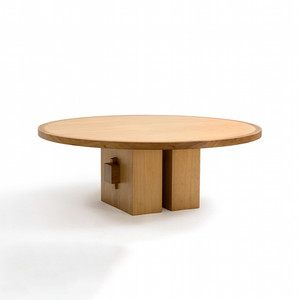
The Guilli dining table is characterized by thick, wooden pieces that create its basic structure; two blocks are united by a horizontal wooden piece, locked in with wooden pins, and a circular wooden top serves as its surface. - Top and base come in a variety of different woods - Part of the Etel collection - Made to order

Designed in 1928 by Gregori Warchavchik, the GW tea trolley is a signature piece of revolutionary Brazilian modern design, featured in the first modernist house of Brazil, on Rua Santa Cruz in Sao Paulo. The trolley adds refinement to an office, den or living room. - Base structure made of imbuia or freijó wood - Reissued by Etel - Made to order
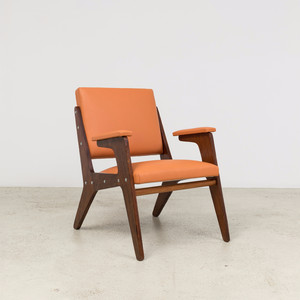
A Brazilian pioneer to the industrialization of the furniture manufacturing process, José Zanine Caldas, honed his skills early as a construction company draftsmen and an architectural model maker at his own firm. Comfortable around the plywood material of which most of his early work is constructed of, Caldas designed from an efficient low-waste…
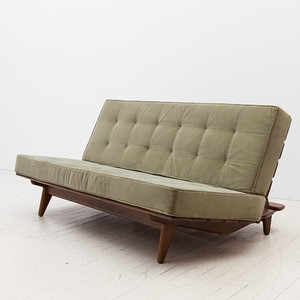
- Base structure available in cherry wood or imbuia wood - Upholstery offered in a variety of fabrics, COM - Made to order One of the first pieces of furniture Sergio Rodrigues designed, the "Hauner" sofa is evident of mid-century design tendencies conflating with Rodrigues' unique aesthetics. Tapered slanted legs affix to a slatted wooden frame that…
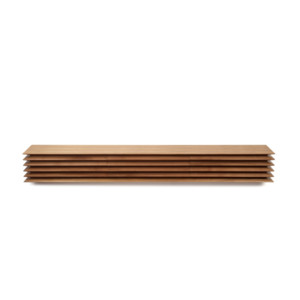
The ‘Horizonte’ Sideboard, which translates to ‘horizon’ in Portuguese, is composed of a minimal yet sophisticated, accordion-like wood structure. Though the sideboard appears to be solid, drawers emerge from the angulated surface. - Available in a variety of woods - Part of the Etel collection - Made to order
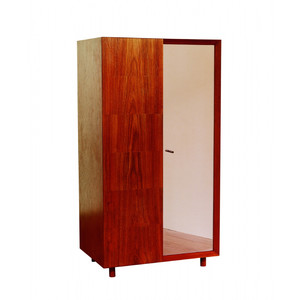
The Huguinho bar is made from cedar and has a gold-tinted mirror door. Its name is an homage to one of the the three nephews of the Disney character Scrooge McDuck - or Tio Patinhas in Portuguese - from the "Three Ducks From the Tropics." - Base structure made of stained cedar wood - Gold mirror door - Part of the Etel collection - Made to order
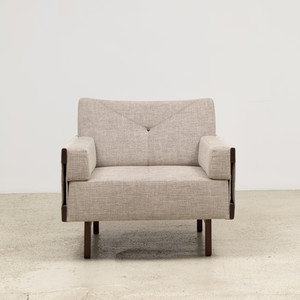
Named after Jorge Zalszupin's sister, Ina, this armchair is characterized by its orthogonal lines and voluminous upholstery, adorned by sophisticated details, like visible stitching and hand-carved wooden upholstery buttons. The result: comfort and elegance. - Base structure made of different finishes of imbuia or freijó wood - Upholstery offered…
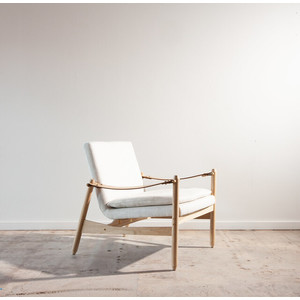
Originally designed in the 1960s, the Ipanema lounge chair is an homage to the infamous Rio de Janeiro beach, as well as the infamous romantic song named after it by Tom Jobim and Vinícius de Moraes. Leather arms detailed with wooden buttons, distinguish this design, perfect for a relaxed, elegant setting. - Base structure made of freijo or imbuia…
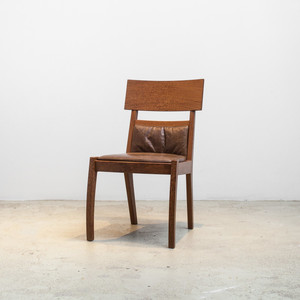
Named after a Brazilian beach in the southern coast of São Paulo, Carlos Motta's Iporanga dining chair is as charming as it is comfortable; its structure is made from solid native Brazilian wood, and a leather upholstered seat and half back. - Base structure made of cumaru, freijó, tauari or sucupira wood - Upholstery offered in a variety of fabrics,…

The ‘Irene’ stool in natural or stained freijó wood is designed for low counters, though suitable for various spaces. The edges of the stool are molded with a downward curvature in a mushroom-like shape, so users can comfortably rest their feet on the ground and avoid pressure on the legs. The piece is an homage to a great friend of the designer,…
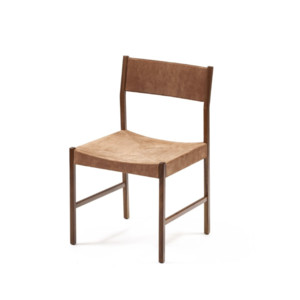
Designed by Jorge Zalszupin in 1969, this comfortable, delicate piece has a wooden base structure, and leather back and seat with beautiful stitching. The word ‘Itamaraty’ is of Indigenous origin, and became the name of the Itamaraty Palace in Brasilia, which houses Brazil’s Ministry of Foreign Affairs. - Available in variety of woods - Available…
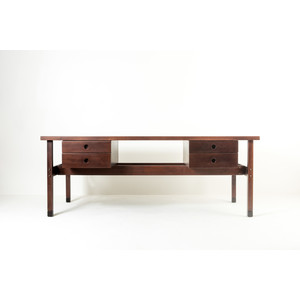
Itamaraty designates an extensive line of desks created for the Pamphilj Palace, home of the Brazilian Embassy in Italy and the Arcos Palace, headquarters of the Foreign Ministry in Brasilia, also known as Itamaraty Palace. This reedition is based on the original model created in 1960. • Base structure available in natural or stained freijó wood…
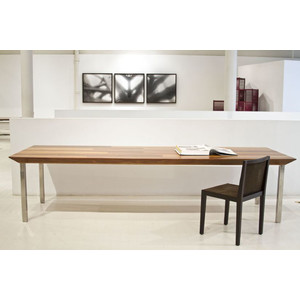
The minimalist design of the IW dining table contrasts warmer and cooler tones of the various solid hardwoods in its surface, and is mounted a top chromed steel legs. Awarded "Linha de Móveis - Instituto dos Arquitetos do Brasil" prize in 2006. - Base structure made of a combination of native Brazilian woods including freijó, sucupira and timbaúba…
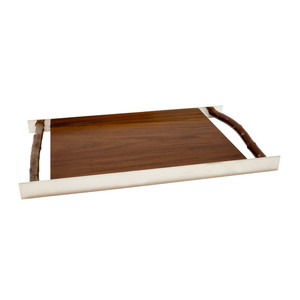
Striking, graceful, and creative, the IW tray translates the simple and sleek lines of Isay Weinfeld's architecture to interior design. Featuring Guava tree branches for handles, the hand-made IW tray is comprised of native Brazilian Ipê wood and a silver frame, gracefully highlighting each material’s natural and geometrical elements. Awarded with…
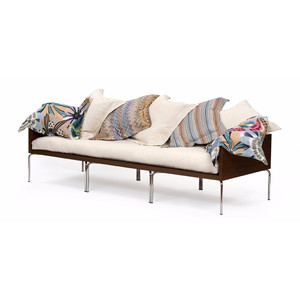
The IW sofa is composed of orthogonal, straight and hard lines which contrast with the softness of the upholstered seat and loose pillows. Awarded "Linha de Móveis - Instituto dos Arquitetos do Brasil" in 2006. - Base structure made of ipê wood - Chrome steel legs - Upholstery offered in a variety of fabrics and COM - Part of the Etel collection…
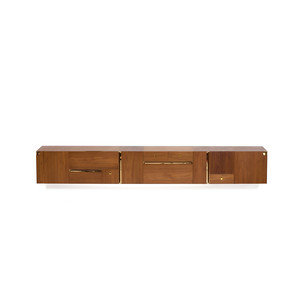
The choice of either a mix of cedar, ipê and tauari wood, or one alone, to build its focal structure, makes the IW sideboard unique. Furthermore, the sideboard's handles and detailing are made from gold-plated metal. Awarded "Linha de Móveis - Instituto dos Arquitetos do Brasil" prize in 2006. - Base structure made of cedar, ipê or tauari wood -…
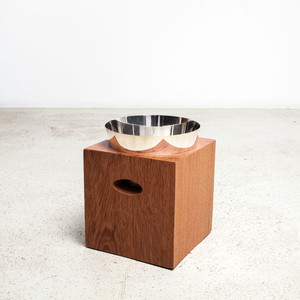
This elegant, minimal design by architect Isay Weinfeld is characterized by its Brazilian hardwood cube-like base, and the circular silver container that sits inside it; a contrast in materiality and tone. Awarded with the "Linha de Móveis - Instituto dos Arquitetos do Brasil" prize in 2006. - Handmade in Brazil - Imbuia wood and silver - Part of…
